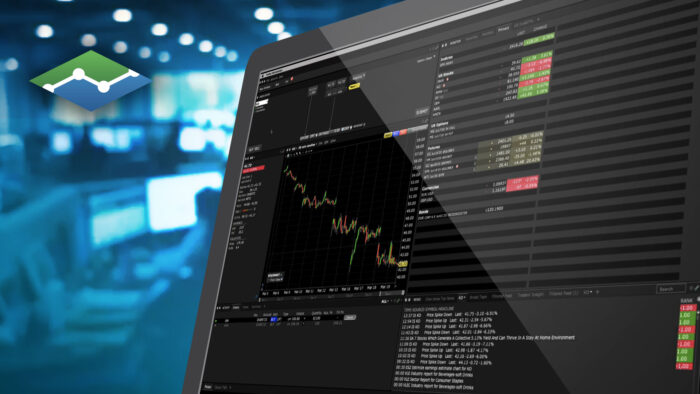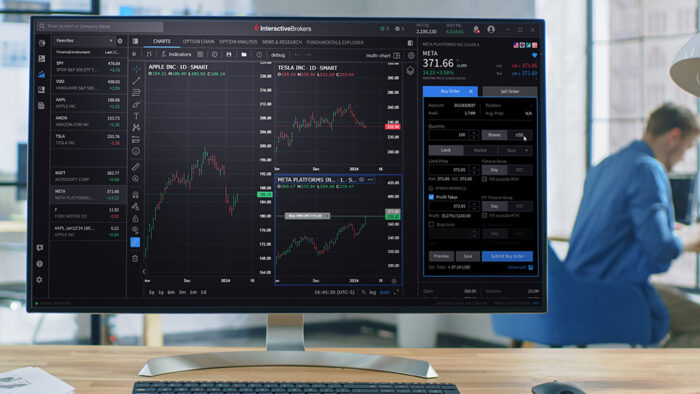Many of you know that I am a big fan of market adages. In fact, I’ve recently taped an IBKR Podcast about the topic. Even some of the silliest sayings contain time-tested market truths at their root. We certainly see that in phrases like “the trend is your friend,” “buy low, sell high” and the like. But one of my favorites has recently been turned upside down, and I believe that the “product du jour” is the reason.
Consider the phrase “stocks take the stairs up and the elevator down.” Throughout history we have seen equity markets rise steadily over time in major bull market uptrends, and then give back large portions of those gains in panicky down moves. But lately we have seen the opposite.
From August through October we saw stocks grind lower without major downdrafts and without substantial increases in volatility (or demand for volatility protection). The selloff was generally orderly. Remember, even though VIX rose from the mid-teens to the low twenties, that is hardly the sort of move that indicates true fear. At least recently, stocks generally took the down staircase, not the elevator.
Yet recently we have seen stocks take the up elevator. During the 10 trading days in November prior to today, we have seen three sessions where the S&P 500 (SPX) rose more than 1.5% – including last Friday and Tuesday. The NASDAQ 100 (NDX) had four. The moves definitely did not occur in a vacuum. Both bonds and stocks had become deeply oversold in recent weeks, so they reacted very positively to signs that inflation is ebbing and that the labor market is easing. As we noted yesterday, the market has priced out the idea of further rate hikes from the Federal Reserve and has become more aggressive about pricing in cuts next year. (I agree that there is virtually no probability of an imminent hike but believe that the market is too enthusiastic about rate cuts.) Those indeed are good reasons for rallies in both stocks and bonds.
The nature of the most recent rallies, particularly Friday’s, got me thinking about the stairs/elevator adage. As it was occurring, we noted that Friday’s rally had the same character as the “gamma squeezes” that we came to expect on many Fridays during the 2020-2021 bull market. Remember, all sorts of traders discovered the power of options trading, particularly because they offer the possibility for leveraged speculation with defined risk. Furthermore, they realized that enough traders crowd onto one side of a trade, it improved the odds of it becoming self-fulfilling. On a bullish day, if traders buy sufficient quantities of slightly out of the money expiring options, those who sold them the options find themselves needing to cover their delta exposure as the stocks rose (i.e. gamma). At its most extreme, it can create a somewhat self-sustaining feedback loop. And with the advent of daily expirations (aka 0DTE options), traders don’t need to wait for Fridays to attempt this strategy – though it is more effective when hundreds of popular equity options join the usual cadre of index and ETF options.
Statistics bear this out somewhat. Over the past six months, which have seen significant ups and downs in the market, SPX rose on 53% of the 128 trading sessions. That is a historically typical percentage. On up days, SPX rose by +0.65%, while on down days it fell by -0.60%. In recent history, we have actually seen more aggressive buying than selling, though only modestly so (and with too small a timeframe to be statistically significant).
Why might this be? We noted the reasons why modest rallies sometimes metastasize into major ones. But the same doesn’t hold true for down days. The feedback loop could easily occur on the downside, but it rarely does. I believe this is because most traders are more comfortable trading from the long side than the short.
Now, all this goes out the window if traders get nervous, let alone panicky. Then we see aggressive sellers and timid buyers, which leads to the “down elevator.” But even during the recent downdraft, that situation didn’t occur. It hasn’t since March, when banks failed, but the quick resolution of that crisis led to willing buyers even as markets fell this autumn. And now that we are in a bullish cycle, those buyers have become aggressive once again. Don’t be surprised to see more “up elevator” days while the mood remains sanguine.
Disclosure: Interactive Brokers
The analysis in this material is provided for information only and is not and should not be construed as an offer to sell or the solicitation of an offer to buy any security. To the extent that this material discusses general market activity, industry or sector trends or other broad-based economic or political conditions, it should not be construed as research or investment advice. To the extent that it includes references to specific securities, commodities, currencies, or other instruments, those references do not constitute a recommendation by IBKR to buy, sell or hold such investments. This material does not and is not intended to take into account the particular financial conditions, investment objectives or requirements of individual customers. Before acting on this material, you should consider whether it is suitable for your particular circumstances and, as necessary, seek professional advice.
The views and opinions expressed herein are those of the author and do not necessarily reflect the views of Interactive Brokers, its affiliates, or its employees.
Disclosure: Options (with multiple legs)
Options involve risk and are not suitable for all investors. For information on the uses and risks of options read the "Characteristics and Risks of Standardized Options" also known as the options disclosure document (ODD). Multiple leg strategies, including spreads, will incur multiple transaction costs.
Disclosure: ETFs
Any discussion or mention of an ETF is not to be construed as recommendation, promotion or solicitation. All investors should review and consider associated investment risks, charges and expenses of the investment company or fund prior to investing. Before acting on this material, you should consider whether it is suitable for your particular circumstances and, as necessary, seek professional advice.
Disclosure: Bonds
As with all investments, your capital is at risk.












